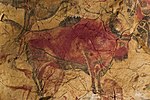Puente San Miguel
Cantabria stubsPopulated places in CantabriaSpain geography stubs

Puente San Miguel (Spain) (formerly known as Bárcena la Puente), is the capital of the municipality of Reocín in Cantabria, Spain, and its most important population center, with 15,000 inhabitants (2010). It is located 55 kilometers from Santander and is 41 meters (ASL). It is connected to Santander by the Feve company railway.
Excerpt from the Wikipedia article Puente San Miguel (License: CC BY-SA 3.0, Authors, Images).Puente San Miguel
Reocín
Geographical coordinates (GPS) Address Nearby Places Show on map
Geographical coordinates (GPS)
| Latitude | Longitude |
|---|---|
| N 43.359722222222 ° | E -4.0869444444444 ° |
Address
39530 Reocín
Cantabria, Spain
Open on Google Maps







